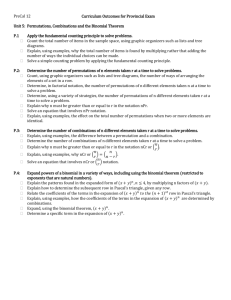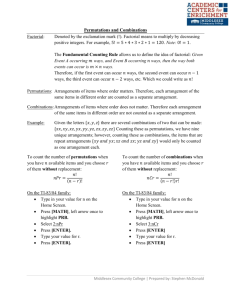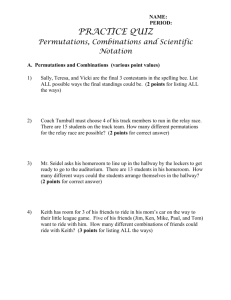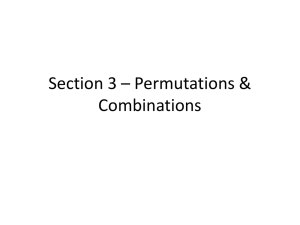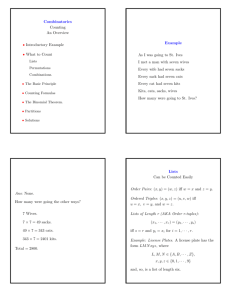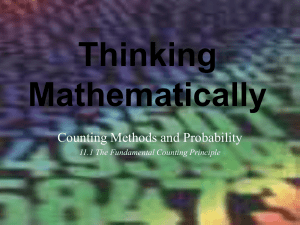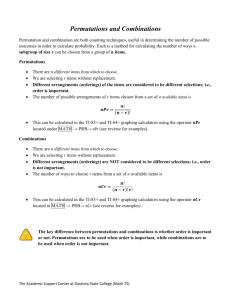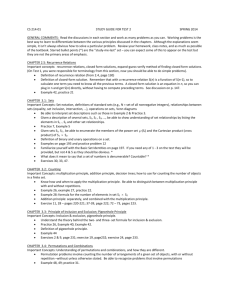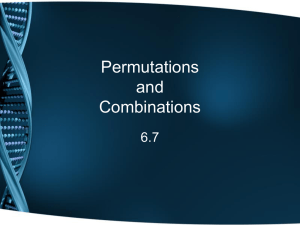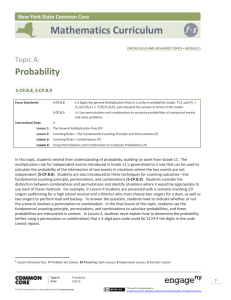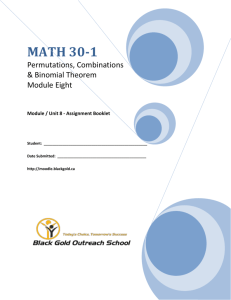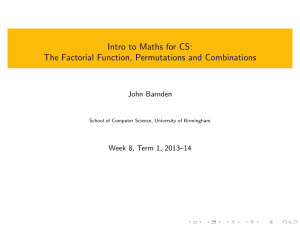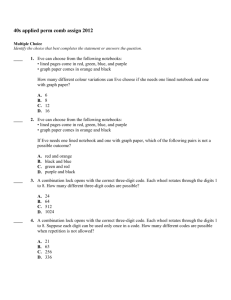P30.12 - Demonstrate understanding of permutations, including the
advertisement
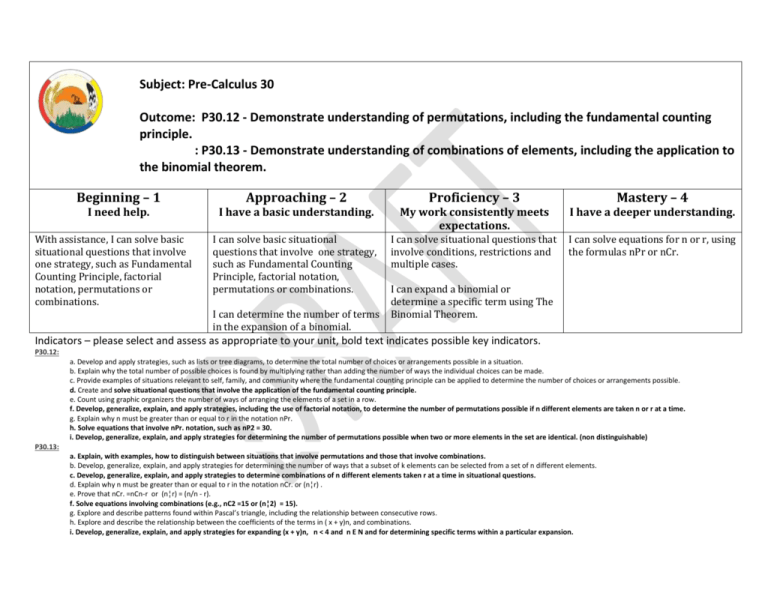
Subject: Pre-Calculus 30 Outcome: P30.12 - Demonstrate understanding of permutations, including the fundamental counting principle. : P30.13 - Demonstrate understanding of combinations of elements, including the application to the binomial theorem. Beginning – 1 Approaching – 2 Proficiency – 3 Mastery – 4 I need help. I have a basic understanding. My work consistently meets expectations. I have a deeper understanding. I can solve basic situational questions that involve one strategy, such as Fundamental Counting Principle, factorial notation, permutations or combinations. I can solve situational questions that involve conditions, restrictions and multiple cases. I can solve equations for n or r, using the formulas nPr or nCr. With assistance, I can solve basic situational questions that involve one strategy, such as Fundamental Counting Principle, factorial notation, permutations or combinations. I can determine the number of terms in the expansion of a binomial. I can expand a binomial or determine a specific term using The Binomial Theorem. Indicators – please select and assess as appropriate to your unit, bold text indicates possible key indicators. P30.12: a. Develop and apply strategies, such as lists or tree diagrams, to determine the total number of choices or arrangements possible in a situation. b. Explain why the total number of possible choices is found by multiplying rather than adding the number of ways the individual choices can be made. c. Provide examples of situations relevant to self, family, and community where the fundamental counting principle can be applied to determine the number of choices or arrangements possible. d. Create and solve situational questions that involve the application of the fundamental counting principle. e. Count using graphic organizers the number of ways of arranging the elements of a set in a row. f. Develop, generalize, explain, and apply strategies, including the use of factorial notation, to determine the number of permutations possible if n different elements are taken n or r at a time. g. Explain why n must be greater than or equal to r in the notation nPr. h. Solve equations that involve nPr. notation, such as nP2 = 30. i. Develop, generalize, explain, and apply strategies for determining the number of permutations possible when two or more elements in the set are identical. (non distinguishable) P30.13: a. Explain, with examples, how to distinguish between situations that involve permutations and those that involve combinations. b. Develop, generalize, explain, and apply strategies for determining the number of ways that a subset of k elements can be selected from a set of n different elements. c. Develop, generalize, explain, and apply strategies to determine combinations of n different elements taken r at a time in situational questions. d. Explain why n must be greater than or equal to r in the notation nCr. or (n¦r) . e. Prove that nCr. =nCn-r or (n¦r) = (n/n - r). f. Solve equations involving combinations (e.g., nC2 =15 or (n¦2) = 15). g. Explore and describe patterns found within Pascal’s triangle, including the relationship between consecutive rows. h. Explore and describe the relationship between the coefficients of the terms in ( x + y)n, and combinations. i. Develop, generalize, explain, and apply strategies for expanding (x + y)n, n < 4 and n E N and for determining specific terms within a particular expansion. Refer to the Saskatchewan Curriculum Guide Pre-Calculus 30
